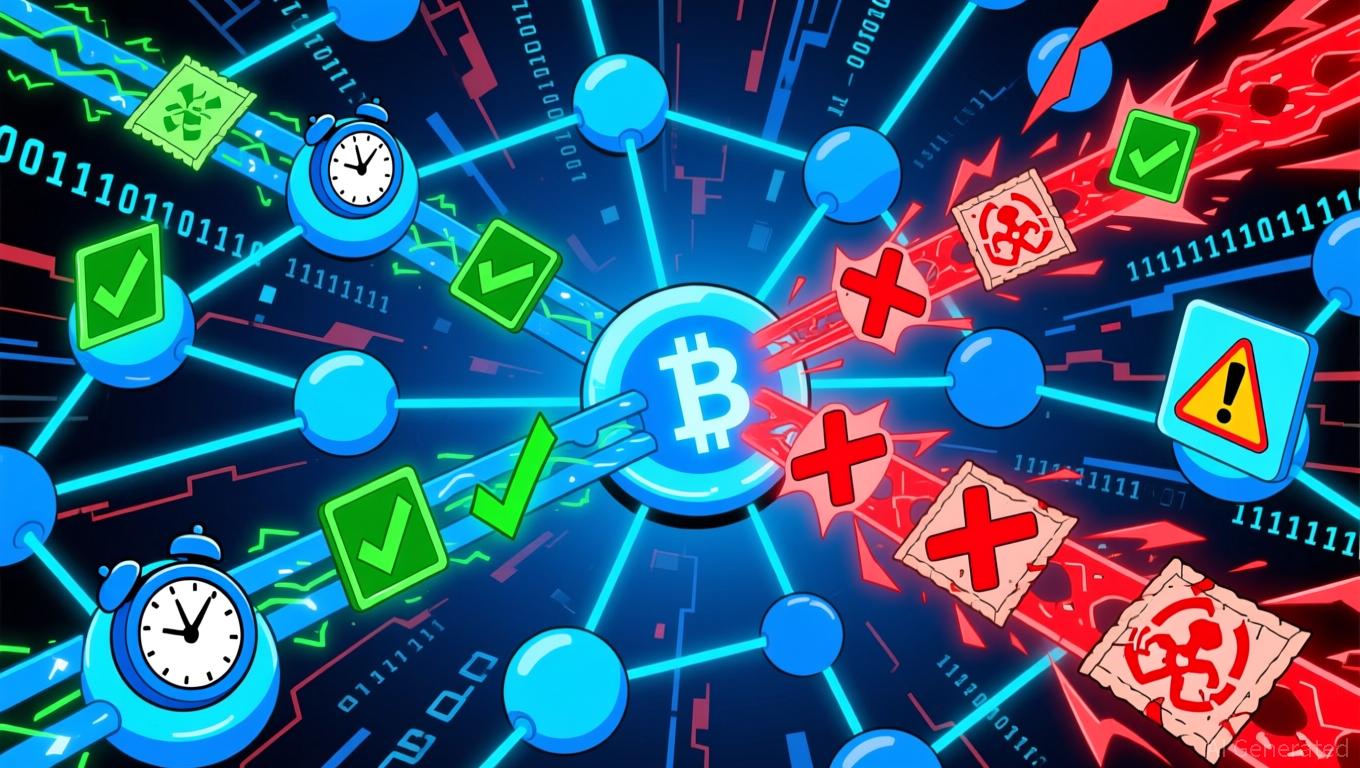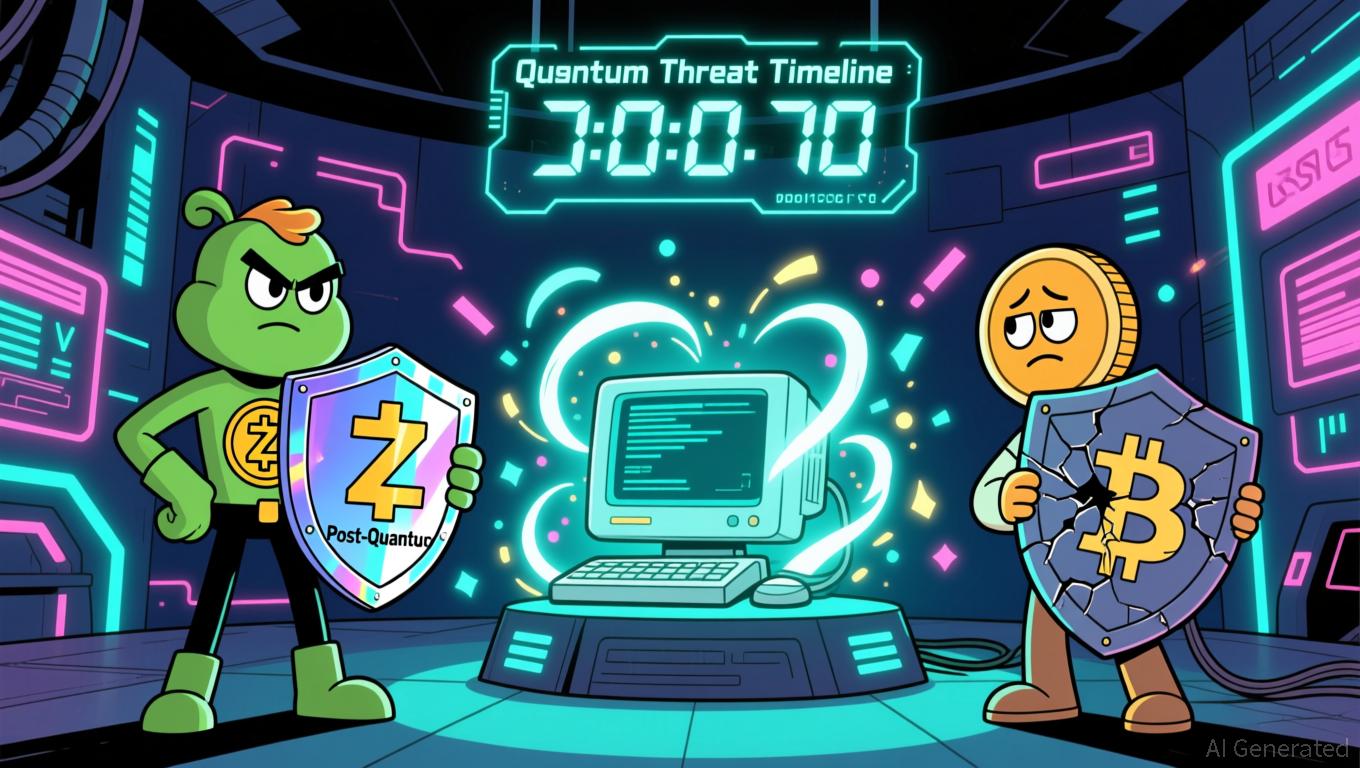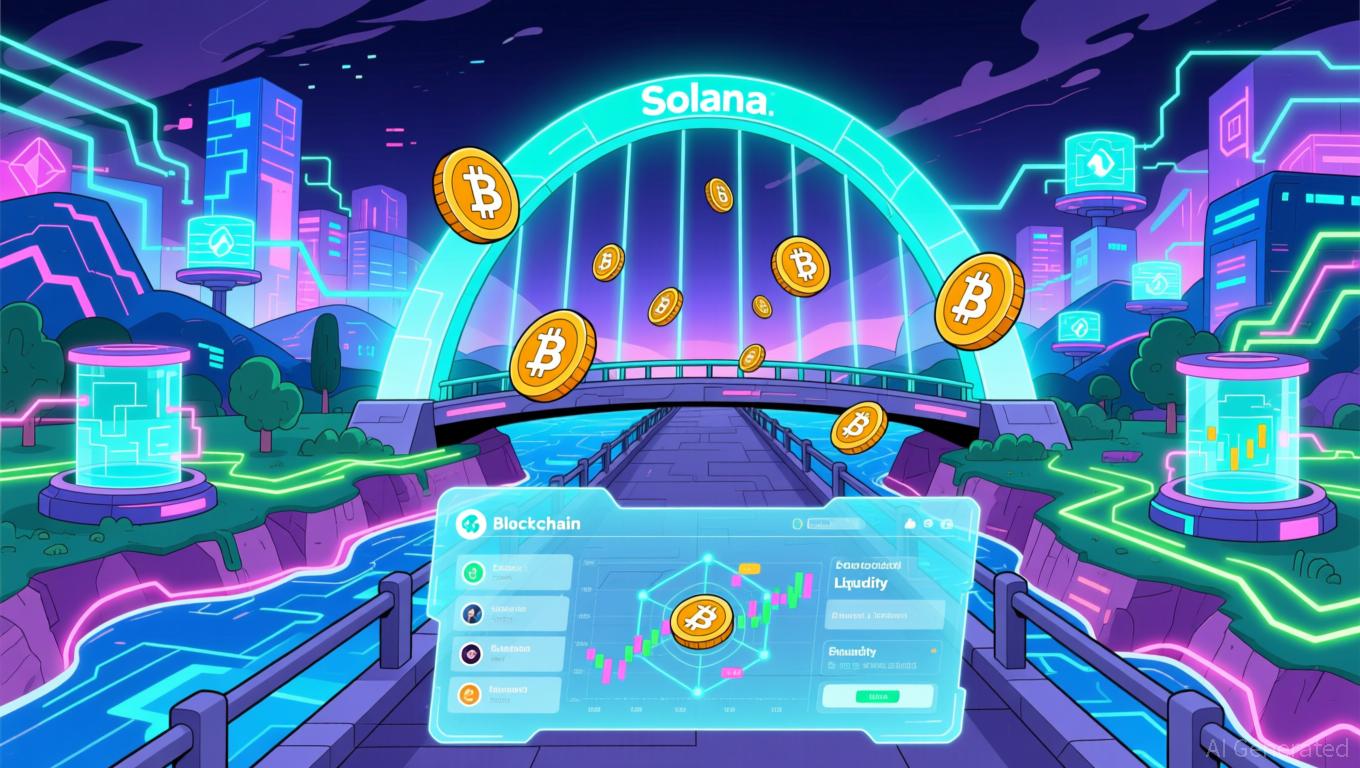New debt-fueled era for Bitcoin miners marked by 1 zetahash milestone – Report
Bitcoin mining crossed the zetahash threshold in September as the network averaged 1.034 ZH/s, and hashprice fell below $47 per PH per second.
According to a new report by The MinerMag, the step up in difficulty coincided with miners’ equity values nearly doubling since August to about $90 billion by October 15, while BTC fell 3.7 percent over the same period.
The sector’s center of gravity has shifted toward balance sheet capacity, convertible debt, and high-performance computing contracts. Record difficulty has squeezed operating margins, and power costs have remained pinned near fixed-rate agreements.
According to the report, listed operators’ combined market capitalization climbed from roughly $41 billion in August to $58 billion in September and then to $90 billion by mid-October, even as hashprice revisited levels last seen in May.
| August | $41B | Start of rally window |
| September | $58B | Continued outperformance vs. BTC |
| October 15 | $90B | More than doubled since August; BTC −3.7% in same period |
The repricing tracks a narrative of digital-infrastructure exposure, where miners present contracted power, data-center buildouts, and AI colocation as incremental earnings streams that are less tethered to block rewards.
The MinerMag’s performance panel shows that leaders over the past month included Bitfarms, up 162 percent, Canaan, up 149 percent, and CleanSpark, up 125 percent. MARA rose 39 percent, Riot 32 percent, and BTC down 3.7 percent in the same window.
The production league table has reshuffled as fleets scale.
Per MinerMag’s September snapshot, MARA realized 53.3 EH/s, about 88 percent of deployed capacity, and mined 736 BTC, selling roughly half. Bitdeer increased its realized hashrate by one-third to 32.7 EH/s and moved into the fifth slot, while HIVE reached 19.3 EH/s and Cipher 18.2 EH/s as both pushed toward the 20 EH/s threshold that now informally defines the upper mid-tier.
These levels set the backdrop for consolidation, site swaps, and power-density upgrades as operators seek to qualify for hyperscale AI leases that require long-term, low-interruption power.
Financing is the other pillar of the new regime. Miners raised more than $1 billion in the second quarter through convertibles and close to $3 billion already in the third quarter, with issuers spanning Cipher, MARA, and TeraWulf. IREN closed $1 billion, TeraWulf outlined plans for $3.2 billion in senior secured notes, and Bitfarms proposed $300 million in convertibles.
The structure of this cycle differs from 2021’s ASIC- and infrastructure-secured loans that later impaired, since today’s zero-coupon convertibles push cash interest out of the near term and leave the equity conversion path open.
The trade-off is clear, if equity momentum moderates, maturities twenty-four to thirty-six months out move into focus and the sector confronts either dilution through cashless conversions or cash settlement against lower share prices.
The economics at the rig level anchor the discussion.
Using The MinerMag’s base case with power at $0.06 per kWh, revenue runs near $0.054 per TH per day. Payback periods span roughly 458 days for S19XP+ Hyd to about 900 days for S23 Hyd across efficiency bands from 9.5 to 19 J/TH, reinforcing the gap between fleets on the latest-generation curve and those further back.
The report’s rule-of-thumb elasticities imply that a 10 percent change in revenue per TH per day moves payback by roughly 10 to 15 percent, because opex tied to joules per terahash dominates while near-term capex per TH is fixed.
That sensitivity makes difficulty and BTC path the primary variables, with a potential four percent difficulty relief flagged for the next adjustment likely to be brief.
| S23 Hyd (9.5 J/TH) | $30 | $0.054 | $0.237 | $13.68 | 900 |
| S21XP Imm. (13.5 J/TH) | $18 | $0.054 | $0.167 | $19.44 | 653 |
| S21+ Hydro (15 J/TH) | $21.5 | $0.054 | $0.150 | $21.60 | 846 |
| S21 Pro (15 J/TH) | $16 | $0.054 | $0.150 | $21.60 | 630 |
| S21 Imm. (16 J/TH) | $15.5 | $0.054 | $0.141 | $23.04 | 647 |
| S21+ (16.5 J/TH) | $15 | $0.054 | $0.136 | $23.76 | 645 |
| S19XP+ Hyd (19 J/TH) | $9 | $0.054 | $0.118 | $27.36 | 458 |
Operationally, the zetahash regime raises the bar for power procurement, curtailment strategy, and efficiency upgrades.
Operators without sub-$0.05 per kWh power or without enough latest-generation joules per terahash face compressed margins until BTC reprices or sustained difficulty relief arrives.
The MinerMag’s scenarios outline three near-term paths from today’s base: if difficulty grinds higher and BTC stays flat, hashprice drifts 10 to 20 percent lower and paybacks extend by two to six months for common air-cooled fleets; if the flagged difficulty relief arrives with only a modest BTC bounce, a five to ten percent tailwind appears and fades; if BTC rerates while difficulty is flat, a 15 to 25 percent hashprice lift pulls lower-efficiency rigs back toward mid-cycle paybacks using the base table as anchor.
The equity story now hinges on execution in non-mining revenue.
The MinerMag’s recent pipeline items include a Google-backed $3 billion AI hosting initiative tied to Cipher, expanded credit support for CleanSpark’s high-performance computing push, Galaxy’s $460 million Texas site build framed as an AI hub, and the Microsoft-aligned Nscale and Ionic Digital agreement pegged at $14 billion.
These targets, while large, require interconnects, transformers, and compute tenants to arrive on time, and disclosures to translate headlines into run-rate revenue. If ramp schedules slip, equity narratives built on data-center optionality converge back toward BTC beta.
Jurisdiction adds dispersion. The MinerMag cites new capacity in Norway and Bhutan under hydro-rich frameworks, and Laos exploring dam-linked mining finance, each of which shifts the global cost curve by moving incremental exahash into lower-cost buckets.
At the same time, idiosyncratic risks, from U.S. state litigation such as cases in Kentucky to investigations around individual European operators, translate into a wider distribution of multiples as investors price regulatory and legal variance by geography and corporate governance.
A simple runway lens ties the pieces together.
Map the third-quarter and fourth-quarter convertible issuers to an eighteen- to thirty-six-month refi clock.
In an up tape, equity sits above conversion prices and cashless conversions retire debt while funding capex for new sites and higher-efficiency rigs.
In a down tape, companies either issue shares into weakness or reserve cash for settlement, curbing growth capex.
Both paths feed back into network difficulty, because capacity additions today raise baseline difficulty three to six months out, which in turn lowers hashprice unless BTC outpaces the expansion.
The MinerMag’s cycle description captures this reflexivity: equity up, deal window open, capacity up, difficulty up, each turn pressuring margins until BTC or fees absorb the difference.
For operators racing toward or past 20 EH/s, scale and power quality provide optionality, including load-balancing across mining and AI tenants, treasury strategies around BTC holdings and sales, and the latitude to pause or accelerate expansions as power markets move.
The MinerMag’s September table shows MARA selling about half of its monthly BTC output, a stance that adds operating cash while keeping some BTC beta. Others have leaned more fully into issuances, site-level debt, or colocation prepayments. The dispersion in choices will define who can sustain paybacks within the 500- to 700-day band if hashprice remains under the present baseline.
The numbers, and the financing mix behind them, leave the industry priced as infrastructure with crypto torque.
Hashrate has moved into a higher-pressure zone, equities have rerated on capacity and AI pipelines, and the debt stack has shifted toward convertibles with a clear refi window.
The MinerMag posits that the immediate catalyst is limited to a possible single-digit difficulty relief, with economics still anchored by $0.06 per kWh power and revenue near $0.054 per TH per day.
The near-term task for miners is converting announced data-center projects and balance-sheet firepower into steady non-mining revenue while absorbing the zetahash baseline.
The post New debt-fueled era for Bitcoin miners marked by 1 zetahash milestone – Report appeared first on CryptoSlate.
Disclaimer: The content of this article solely reflects the author's opinion and does not represent the platform in any capacity. This article is not intended to serve as a reference for making investment decisions.
You may also like
Cardano News Update: Frustrated Operator Uses AI to Disrupt Cardano Blockchain, Prompting Urgent Repairs
- Cardano (ADA) faced a chain split from a "premeditated attack" exploiting a 2022 ledger bug, forcing an emergency network upgrade. - A user submitted a malformed delegation transaction bypassing validation checks, creating competing "poisoned" and "healthy" chains. - ADA's price dropped 6% during the incident, with $91M in short leverage, as developers patched the bug and restored consensus. - The attacker, identified as "Homer J.", apologized for using AI-generated commands, while experts highlighted Ca

Solana Updates Today: Sunrise: Solana's Gateway to Online Capital Markets
- Wormhole Labs launches Sunrise, a Solana liquidity gateway enabling direct onboarding of external assets like Monad's MON token via NTT framework. - The platform unifies liquidity across Solana DEXs and block explorers, addressing fragmented bridging challenges through native token transfers. - By designating Sunrise as Monad's primary entry point, Wormhole aims to capture early trading flows and expand support to tokenized commodities and RWAs. - This initiative strengthens Solana's DeFi infrastructure,

Zcash News Today: Institutions Place Their Bets on Zcash’s Quantum Security While Bitcoin Falls Behind
- Zcash developers prioritize quantum-resistant upgrades via modular design, outpacing Bitcoin's slower response to post-quantum threats. - Electric Coin Company integrates NIST-standard algorithms like CRYSTALS-Dilithium, with quantum recoverability protocols nearing completion for 2025 deployment. - Institutional $18M ZEC purchase and 125% price surge highlight market confidence in Zcash's shielded pools and proactive quantum resilience strategy. - Bitcoin lacks concrete post-quantum roadmap despite Vita

Solana News Update: Sunrise Connects Conventional Finance with Blockchain Technology on Solana
- Sunrise, a new platform by Wormhole Labs, streamlines cross-chain token onboarding for Solana via unified gateway. - Launched alongside Monad’s MON token, it addresses Solana’s fragmented liquidity and complex integration challenges. - Using Wormhole’s NTT infrastructure, it ensures fungibility and enables immediate trading on Solana DEXs like Jupiter. - The platform aims to attract investors and expand to tokenized commodities and stocks, bridging traditional finance with blockchain.

